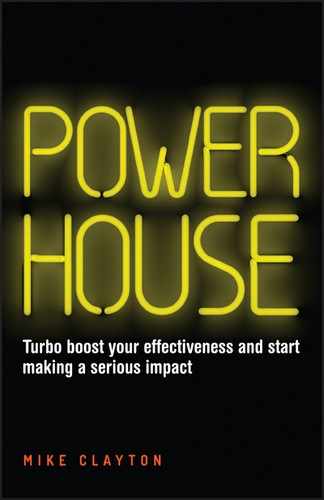Chapter 6
Conduct
Get the Best From Yourself
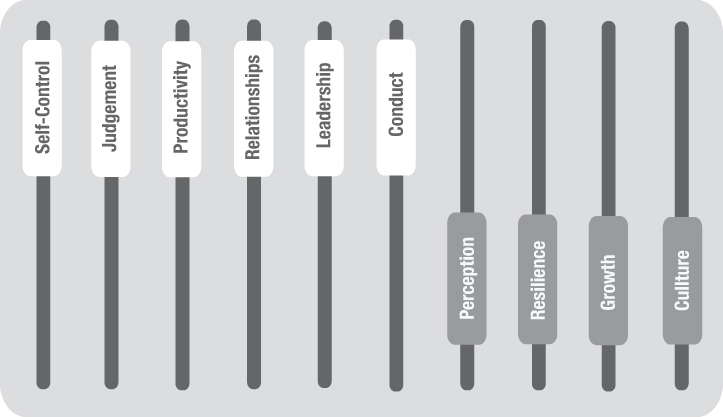
Powerhouse is a state of mind and a pattern of behaviour. Becoming this awesome source of effectiveness means transforming your thinking, your attitudes, your behaviours and, ultimately, becoming an inspiring leader.
Click, Bubble and Hum
Using the right thinking mode for each situation.
There are different ways that we all think. Each one is well tailored to different situations and being a Powerhouse means you are able to use the right thinking mode for each situation.
We will start with the three modes of thinking that get used most often at work; three modes I call: Click, Bubble and Hum.
Click: your fast responding, intuitive response is decisive and efficient.
Bubble: your logical, controlled thought processes give a rigorous response.
Hum: your reflexes and unconscious control of your body help you survive.

Click, Bubble and Hum
Click

Job Description: Efficiency
Click is your brain at its fastest and most efficient. Your brain in Click mode is on cruise, able to handle decisions quickly and with little thought, by accessing all of the rules that you have learned throughout the course of your life. When faced with a choice, Click leaps instantly into action and compares your situation with all of your past experiences and attempts to interpret the new in terms of the old, to develop a rapid response.
In many situations, this is not only efficient, but effective too. Click is your intuition at work. When your current situation is one that you have trained for, and for which your life experiences have prepared you well, Click will cut through all of the detailed information and focus on that which is most relevant. It will create a fast assessment of what is going on and what you should do next. Think of the Click mode as your gut instinct: you rarely know where it comes from, but it feels solid.
Problems arise when you are in a situation for which your past experiences have not prepared you completely. Click needs rules to use, but the rules you have are not quite right for the circumstances. In these cases, Click can let you down badly, making quick judgements that are wrong – sometimes disastrously so. Click has the ability to misread situations, fall into traps, and act on the wrong assessment.
These traps are one of the most important characteristics of the Click mode of thinking. To give it its speed and energy efficiency, Click acquires simple pathways that it likes to follow. Over millions of years of evolution, many such pathways – the thinking equivalent of downhill freeways – have evolved and are pretty much part of the way our brains develop through childhood into our adult state. While these patterns of thought may have served our ancestors well – and may continue to serve us well in certain situations – they represent easy judgements that are often wrong. They are biases in our thinking.
Click's job description may be efficiency, but efficient is not always effective. A Powerhouse needs more resources.
Bubble

Job Description: Rigour
Bubble is not efficient if we think in terms of energy usage and pace of thinking. The Bubble mode works slowly and uses a lot of energy to think through each situation with care. It is the conscious you that does the active thinking about events. Bubble allows you to build on ideas, assess risks and control events. The Bubble mode is analytical, logical and rigorous.
Use Bubble to examine situations that you don't understand, and to evaluate the rapid intuitive response that Click offers, before you act on it. Think of Bubble as Click's more responsible twin– when Click says: ‘This is what to do!’ Bubble responds by saying: ‘Let's think it through carefully first …'
Click often jumps in when Bubble is not paying attention. When you attune your awareness to what is going on, you can sharpen your perception of details and distinctions that Click would miss. This is the strength of the Bubble mode: it has far more information to work from. It is also its weakness, because sometimes Bubble gathers too much information and can become overwhelmed by it. Paralysis by analysis is a symptom of your Bubble mode working too hard at a problem that simply needs Click's simplicity of reasoning.
Bubble thinking takes a lot of effort – literally. It uses a lot of energy and therefore can deplete your mental reserves. When you are engaged in careful Bubble thinking, you need to take breaks and refresh your brain with good food, fresh air and water. For most people, the morning is the best time to engage your Bubble mode, when you are rested and alert. By the end of the day, when you are tired, Bubble starts to give up.
Barack Obama knows how important it is to take the strain off Bubble. He has a very limited range of suit, shirt and tie styles, so that he can take anything out of the wardrobe and know that he will look good. By removing trivial decisions from Bubble's agenda, he can save energy for the big decisions that merit Bubble's full attention.
'You'll see I wear only gray or blue suits. I'm trying to pare down decisions. I don't want to make decisions about what I'm eating or wearing. You need to routinize yourself.
You can't be going through the day distracted by trivia.'
Barack Obama, 44th President of the United States
Hum
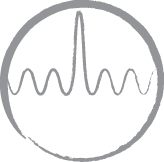
Job Description: Survival Edge
Deep down in the most fundamental part of your brain lies Hum – the mode responsible for keeping you alive and reacting to threats. Hum offers automatic responses to basic stimuli. It is even faster and more efficient than Click, but its domain is limited to physiological responses to stimuli. Hum doesn't deliberate: it reacts. And its reactions trigger changes in our bodies and in the balance of hormones coursing through them. It has four default settings:
Setting 1: Alright
When everything is okay, Hum keeps our bodies ticking over as they should, and completely below the level of our consciousness most of the time. We breathe, we digest, our hearts beat, and our bodies maintain and mend themselves.
Setting 2: Fright
Hum responds to a shock or threat by closing everything down. We become frozen and unable to respond. This is Hum's way of stopping us stepping forward into danger. At times, however, in the modern world, Hum activates our fright setting at the wrong time, rendering us unable to proceed with important tasks.
Setting 3: Fight
Hum sometimes responds to a challenge by preparing for battle. This would be great if a wild animal were threatening your family, but when your boss takes you to task for producing a poor piece of work, or your client suggests that a competitor might do a better job, fighting is the last thing you need to do.
Setting 4: Flight
When Hum thinks it cannot win a fight, it tries to get us away from danger. Setting 2 turned everything off: Settings 3 and 4 turn back on the resources we need for fight or flight. In this case, your heart pounds, your muscles twitch, your mind races and you just want to get out of here. It is Hum that takes over when nerves start to get the better of you before an interview or presentation.
Hum is ever vigilant and that is its strength. It senses danger and prepares you to act. Its weakness is that it takes over so completely that Bubble often finds it hard to re-take control. But if you learn to spot the effects of Hum's intervention, and can mentally step back and relax, and then take a few deep, calming breaths to calm Hum's activity down, then Hum becomes the asset it should be, giving you a survival edge in troubled times.
Effectiveness = Efficiency + Rigour + Survival Edge
There are two other modes that most of us under-use. For full Powerhouse effectiveness, you need to be able to call upon Sigh mode and Squeak mode at the right times.
Sigh

Job Description: Insight
Sigh is your deep processing mode, which is often active in the background when little seems to be going on. Therefore, Sigh is the source of your creativity and your wisdom. You can think of Sigh as your ‘unconscious consciousness' that is good at spotting the subtle, nearly imperceptible signs of change. Sigh is often your true decision-maker, but you need to be able to calm your mind to access Sigh's judgement and creative thinking.
You can access the awesome processing power of your Sigh mode through mindfulness, meditation and reflection. Taking time out of your busy day to consider, think, reflect and even to daydream, can give Sigh the time and space it needs to release the results of its deliberations into your conscious (Bubble mode) mind. This is why we often have creative thoughts first thing in the morning, eating breakfast, in the shower or bath, or walking. In these cases, Click often has nothing to respond to, Bubble is often relaxed, there are no threats for Hum to deal with. With Bubble quiet, it is able to hear the quiet voice of Sigh and bring it to your attention.
In Chapter 1, we saw the importance of making time to see around the next bend. This is the job of Sigh.
Squeak
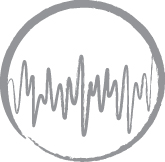
Job Description: Empathy
Squeak is responsible for the short-term feelings that accompany human experience and affect the way we behave. It is your emotional response to events, to people and to your choices. Consequently, Squeak mode is vital in relationship building, in predicting and accommodating the needs of others and in maintaining your own equilibrium in tough times.
Squeak has a large palette of emotions to work with, from the primary colours of happiness, sadness, disgust, anger, fear and surprise, to more complex compounds, like love, jealousy, guilt, hope, contempt, trust and anticipation. Your ability to detect these in the people around you – called empathy – and to consider their implications for your choices adds a new dimension to your effectiveness when working in social, political and collaborative domains. The workplace is all of these, so Squeak is a vital mode to access.
Summary of the Five Modes
| Mode | Job Description | Roles in Effectiveness |
| Click | Efficiency | Speed of response Access to intuition (deep learning) Decisiveness |
| Bubble | Rigour | Awareness of detail and subtlety Analysis and logic Control and consideration |
| Hum | Survival edge | Staying alive and healthy Regulating appetite, sleep and other requirements Reflexive response to threats |
| Sigh | Insight | Creativity Judgement Spotting signs – the next bend |
| Squeak | Empathy | Emotion Relationship building Resilience to pressure, adversity and stress |
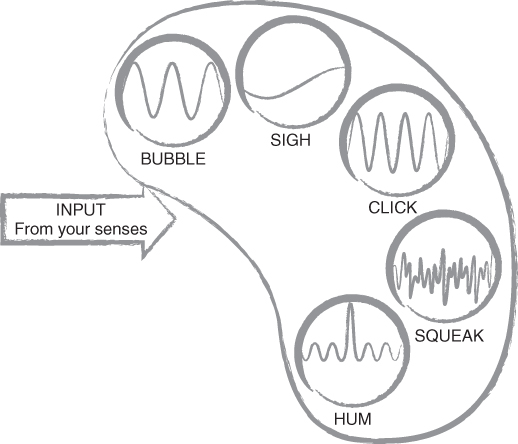
Click, Bubble, Hum, Sigh and Squeak
The Powerhouse Under Pressure
A Powerhouse must understand the way our bodies and minds respond to the pressures of stressful situations.
Stress is not a bad thing. But the effects of stress can be devastating. Therefore, a Powerhouse must understand the way our bodies and minds respond to the pressures of stressful situations. When you do this, you can aim for the Powerhouse Peak.
For simple tasks, such as physical exercise or repetitive, administrative activities; the greater the level of mental and physical arousal, the higher our levels of performance. These tend to be the sort of jobs that need persistence, stamina or single-mindedness.
For more complex, mentally demanding work, too much arousal causes performance to decline, giving rise to a peak in productivity and performance, called the Powerhouse Peak. This is illustrated in the following figure.
The productivity zone lies between the complacency and low morale of tedium, and the anxiety and over-caution of pressure. At the centre of the productivity zone is the Powerhouse Peak.
The Powerhouse Peak
The Powerhouse Peak is characterized by highly focused attention. Here you are feeling fully capable of success and excellence, yet also stretched to the very limit of your experience and expertise. Work at the Powerhouse Peak demands your full attention and, consequently, you have constant awareness of how you are performing. Your perception is honed and you easily slip into flow states where time, discomforts and distractions pass you by. These flow states not only offer peaks in productivity, creativity and clarity of thinking; they are also periods of intense satisfaction, that researcher and author Mihaly Csikszentmihalyi describes as optimal experiences. We experience subjectively high levels of contentment and pleasure.
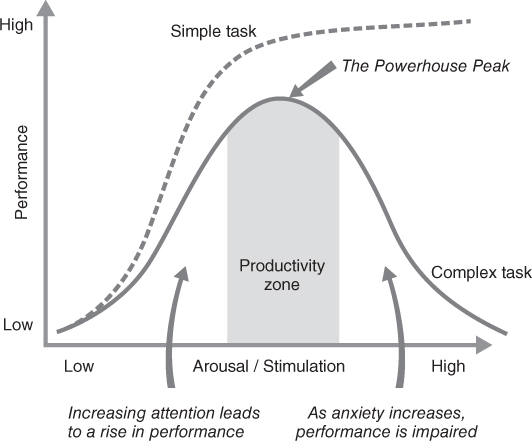
Powerhouse performance, under pressure
The Stress of Boredom
Too little stimulation can be as stressful as too much. It also leads to under-performance where, at best, we accept okay as good enough and, at worst, we make mistakes or even create accidents. Too little stimulation can lead to depression.
A Powerhouse needs to take control and you can do this by deliberately putting yourself under pressure. Set demanding time limits that require astonishing speed and focus to achieve, or require exceptional levels of accuracy or quality. Decide to find ways to innovate that will bring improved value or faster completion times. Occupy your brain so that it does not have time to get bored. Turn mundane tasks, like filing or tidying up, into flow state activities by setting aggressive goals that stretch you to your limits and checking on progress constantly, to further tweak your performance.
Operating Under Pressure
In Chapter 8, we will examine how you can build the resilience to cope under pressure. A vital contributor to sustaining Powerhouse effectiveness is your ability to avoid choking under pressure. It can happen to all of us, from the weekend golfer making a mess of their drive on the eighteenth hole and losing the match, to the accomplished salesperson stumbling over their words at a critical sales presentation to a potential client.
How can a Powerhouse avoid choking under pressure? The simple answer is to ensure that what others would perceive as a high-pressure situation – like the ones above – are situations you perceive as ordinary. That is why the top professional golfers don't choke, and why the star salespeople make the perfect pitch even in the face of the biggest opportunities.
They constantly put themselves under pressure so that it becomes familiar and starts to seem ordinary. The more effectively you can simulate pressure in practice and rehearsals, and the more often you expose yourself to high-pressure situations, the more easily you will stay calm under pressure. So gradually increase the pressure you subject yourself to. In your mind, amplify the stakes for your next low pressure meeting, presentation or interview. This will prepare you for when the stakes are genuinely high.
Don't Be a Damn Fool
In the absence of an inspiring and worthy leader, people will follow any damn fool who sticks their head over the wall.
People want someone to follow. In the absence of an inspiring and worthy leader, they will follow any damn fool who sticks their head over the wall or steps forward. Don't be a damn fool. Be someone worth following. Be inspirational, be calm and centred, show integrity … Be a worthy leader whom people will be inspired to follow.
Powerhouse is not about leadership; it is about effectiveness. But sometimes you need to lead to be effective. In these cases, what attitudes can you cultivate to be an effective leader and incite people to follow you, to support and challenge you and, crucially, to help you to make a difference? Here are the top ten Powerhouse attitudes.
Powerhouse Attitudes
Upright
Aim to be honourable, ethical and trustworthy. You need to be seen by the people you want to follow you as decent and fair, with a strong moral compass. The word integrity is overused. This one is old-fashioned but simple: you must be an upright member of your community.
Cool
Be calm under pressure, showing the great discipline and self-control that allow you to focus when others buckle: to triumph when others choke. And under pressure, a Powerhouse still expects the highest standards of themself and of others.
Pep
Pep means energy, vigour and self-confidence – almost the defining features of a Powerhouse. But it can also be an acronym, PEP, that stands for Passion, Energy and Poise, which together add up to the charisma, presence and impact that will draw people towards you and inspire them to follow.
Boldness
Have the courage to do what is right, and the confidence to have no regrets when you do. Boldness is about action more than words. While your words may inspire, it is your ability to follow through on your commitments that will cement your authority.
Heed
You can only be a true Powerhouse if you heed your environment and the people around you, paying attention to changes and pressures and acting in a courteous and respectful manner that is mindful of what matters in the long term.
Grit
If one thing will predict Powerhouse success more than any other, it is grit: the perseverance, the staying power and the stamina to stick with a compelling cause in the face of adversity. Grit is the passion and determination to keep going when others would quit. Without a doubt, this is also an appealing quality that leads people to follow.
Open
Be curious, imaginative and observant – open to experiences. But more than this, a Powerhouse leader needs to open themselves up to alternatives, wherever they come from, rather than being proud and didactic. This leads to the kind of adaptability that, when combined with grit, often gets results where others fail.
Hope
When things go badly, to whom do we look for inspiration and consolation? To the person we have chosen to follow. So the next Powerhouse attitude must encompass optimism, good cheer and buoyancy in the face of adversity. Hope may not be a strategy, but it transforms disappointment into determination.
Giving
An old fashioned view of leadership puts the leader at the top. But a Powerhouse leader knows that their role is to be generous with their time, their care and their praise. The concept of servant leadership is one where a Powerhouse sees their job as one of providing resources and protection to their team, to create an environment where the team can thrive and get Powerhouse results.
Thankful
One thing above all transforms leadership: gratitude for the team you have, rather than a constant focus on what you do not have, and how much better it would be if you had more, or better, or just different resources. Be thankful for what you have and look for ways to optimize the opportunities it offers.
Conduct: 10 Powerhouse Pointers
- Click: your fast responding, intuitive response is decisive and efficient.
- Bubble: your logical, controlled thought processes give a rigorous response.
- Hum: your reflexes and unconscious control of your body help you survive.
- Sigh: your slow-bake source of creativity, judgement and insight.
- Squeak: your emotional response that builds relationships, feels and gives you resilience.
- Effectiveness = Efficiency + Rigour + Survival Edge.
- A Powerhouse must understand the way our bodies and minds respond to the pressures of stressful situations.
- The Powerhouse Peak is where your productivity is at a maximum.
- In the absence of an inspiring and worthy leader, people will follow any damn fool who sticks their head over the wall – don't be a fool: your people deserve better leadership than that.
- Sometimes you need to lead to be effective: adopt the top ten Powerhouse attitudes.
